(44669 products available)























































































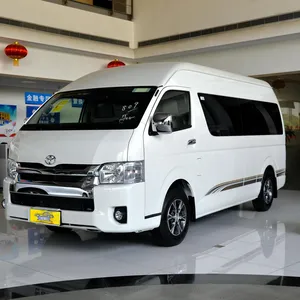
















































































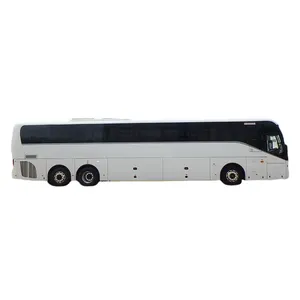



































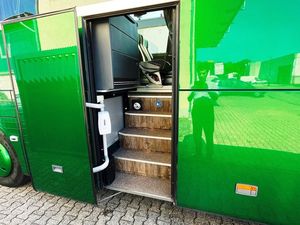
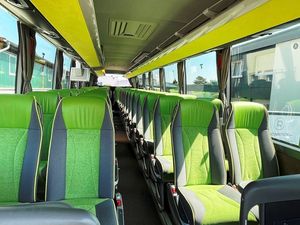

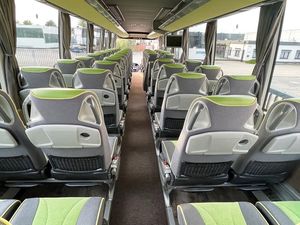










A coach bus is a bus that is designed for long-distance travel. It is used for travel, tourism, and other long-distance commercial services. Coach buses are built with a high level of comfort and safety for passengers. There are many types of coach buses, depending on the needs of the users.
The specifications of the coach bus vary depending on the type of bus and the manufacturer. However, the general specifications are as follows:
Seating Capacity
The seating capacity of the bus ranges from 30 to 60 passengers. Some buses may accommodate more than 60 passengers.
Length
The length of a coach bus is between 30 to 45 feet. A coach bus with a higher seating capacity is longer.
Width
The width of a coach bus is between 8 to 8.5 feet. Some buses may be 8.6 feet wide.
Height
The height of a coach bus is between 11 to 13 feet. Some models may be taller than 13 feet.
Engine Power
Coach buses are designed with powerful engines. The engine power ranges from 250 to 600 horsepower.
Fuel Capacity
The fuel tank capacity ranges from 100 to 300 gallons. A coach bus with a higher seating capacity has a larger fuel tank.
Weight
The gross weight of the coach bus is between 20,000 to 50,000 pounds. The bus weight is affected by the number of passengers and luggage.
Tire Size
The tire size is between 22 to 24 inches in diameter. Coach buses have durable tires with high tread depth.
Suspension System
Most coach buses have an air suspension system. The suspension system improves the comfort of passengers during travel.
Brakes
Generally, coach buses are designed with disc brakes. The braking system of the bus is designed to provide a smooth braking experience.
Safety Features
Coach buses are designed with safety features like seat belts, emergency exits, fire extinguishers, first aid kits, and many more.
It is important to maintain the coach bus to improve safety, increase performance, and reduce the risk of breakdowns. Here are some tips on how to maintain a coach bus:
There are numerous factors to consider when choosing a suitable coach bus, some of them include:
Purpose:
Consider the primary purpose of the bus. Is it for long-distance travel, city tours, or airport transfers? Different purposes may require specific features or configurations.
Capacity:
Determine the required passenger capacity. Coach buses come in various sizes, accommodating anywhere from 30 to 60 or more passengers. Consider the maximum number of passengers and any additional needs, such as luggage capacity.
Comfort and amenities:
Depending on the journey's length and the budget, the coach buses have different levels of comfort and various amenities. Some of the amenities include reclining seats, air conditioning, restrooms, entertainment systems, Wi-Fi access, power outlets, and refreshments or catering services. High-end coaches may offer luxury seating, such as business or first-class sections.
Safety features:
Consider the safety features of the coach bus. Look for buses equipped with advanced safety technologies such as collision avoidance systems, lane departure warning, blind spot monitoring, and emergency braking. Additionally, consider the bus's structural safety features, such as reinforced frames and crash testing certifications.
Accessibility:
If there are passengers with disabilities or reduced mobility, consider the bus's accessibility features. Look for buses with wheelchair lifts or ramps, designated wheelchair spaces, and other accessibility accommodations.
Environmental considerations:
As environmental concerns increase, considering the environmental effects of the coach bus is essential. Look for buses with fuel-efficient engines, low emissions, and compliance with environmental standards. Some buses may also offer alternative fuel options, such as hybrid or electric systems.
Brand and reputation:
Research different bus manufacturers and their reputations. Look for well-known and reliable brands with a track record of producing high-quality buses and providing excellent customer service.
Budget:
Determine the budget for purchasing or renting a coach bus. Consider the initial cost, ongoing maintenance and operating expenses, insurance, and financing options. Balancing the features and quality within the budget is essential to meet specific needs.
Rental or purchase:
Decide whether to rent or buy a coach bus. If the primary need is occasional use, renting may be more cost-effective. However, for regular use, purchasing a coach bus can provide long-term benefits.
Test drive:
If feasible, arrange a test drive of the shortlisted coach buses. This allows for evaluating the bus's performance, handling, comfort, and overall suitability for specific needs.
By considering these factors, one can choose a suitable coach bus that meets specific requirements, ensuring a safe, comfortable, and enjoyable journey for passengers.
Here are some general steps to follow when replacing parts of a coach bus.
Q1: How many people can a coach bus carry?
A1: A coach bus can carry anywhere from 30 to 60 passengers, depending on the bus size and configuration.
Q2: What is the difference between a coach bus and a school bus?
A2: A coach bus is designed for long-distance travel and comfort, while a school bus is mainly used for short trips. Coach buses have fewer seats, are air-conditioned, and have restrooms, while the coach bus has more sitting space.
Q3: Can coach buses be used for corporate events?
A3: Yes, coach buses can be used for corporate events such as meetings, conferences, and team-building activities. They provide a comfortable and efficient mode of transportation for delegates and employees.
Q4: Are coach buses accessible for passengers with reduced mobility?
A4: Coach buses can be made accessible through features like wheelchair lifts and accessible seating arrangements. Coaches that are Accessible to passengers with reduced mobility are available.
The keyword "coach bus" shows a significant variability in web search volume over the past year, with an average monthly web search volume of 33,100. Despite a notable three-month decline of 18%, the year-long trend reveals a robust growth of 49% in web search volume.
Analyzing the monthly data, web search volume for "coach bus" peaked during the summer months, specifically June, August, and September 2024, each reaching 40,500 web searches. Conversely, the lowest web search volume was recorded in January 2024 at 18,100, indicating a seasonal dip. This pattern suggests a strong seasonal influence, with peaks during typical vacation and travel periods.
Throughout the year, the web search volume for "coach bus" fluctuated, reflecting consumer interest and potential market trends. The data points to a growing interest in coach buses, likely driven by increased travel planning and group transportation needs during peak holiday seasons. The detailed monthly breakdown highlights how external factors such as school holidays and vacation periods directly impact search behaviors and, by extension, consumer demand.